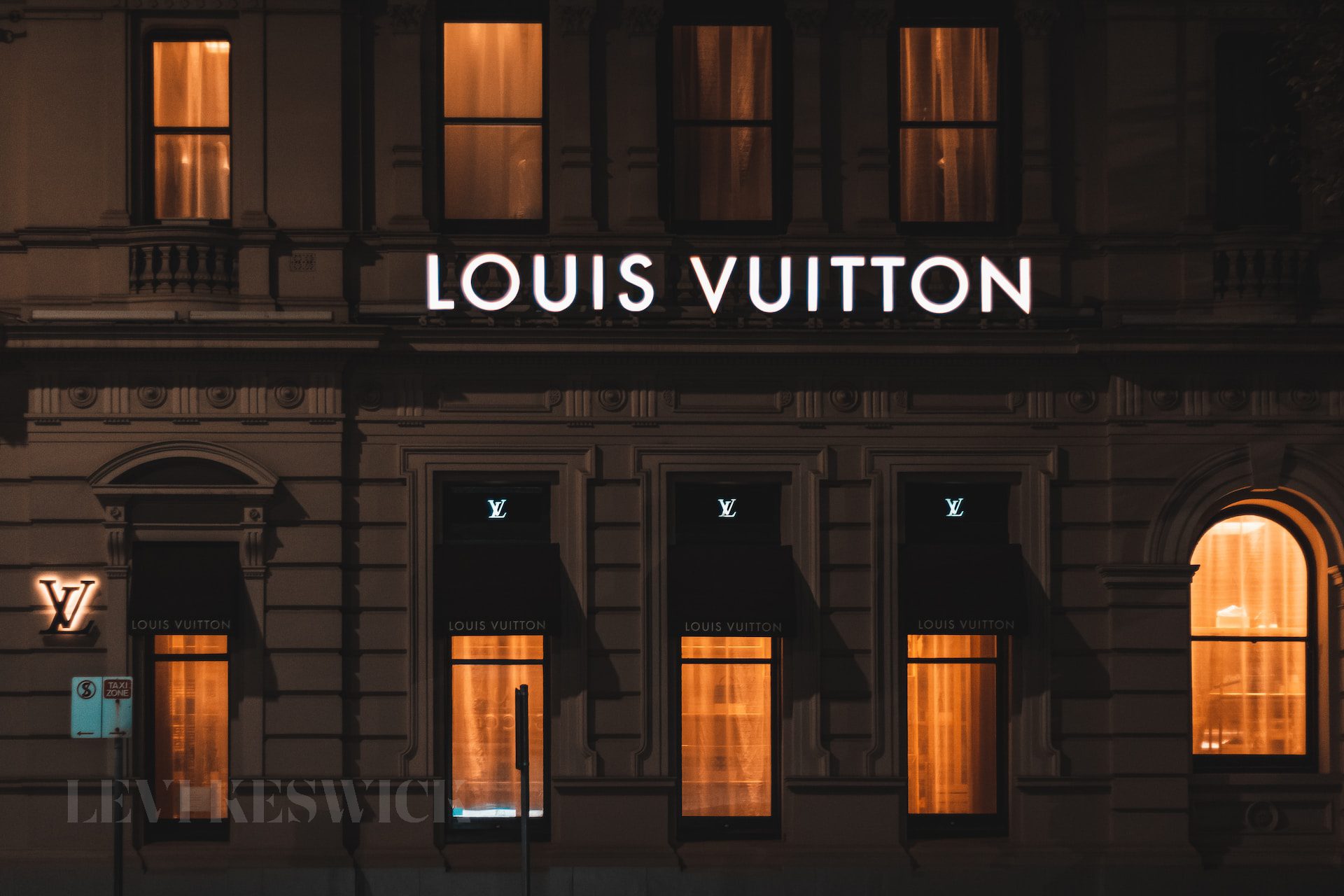Key Takeaways:
- Gucci and Louis Vuitton are two leading luxury brands that have made a significant impact on the fashion world.
- Gucci, founded in 1921 in Florence, Italy, initially focused on high-quality leather goods and later expanded into accessories, clothing, and children’s wear.
- Louis Vuitton, established in 1854, gained prominence with innovative trunk designs and evolved into a brand known for its luggage, accessories, and clothing.
- Louis Vuitton has a higher brand valuation and wider product range, including clothing, shoes, and furniture, while Gucci has experienced a recent resurgence and is valued as one of the top luxury fashion brands.
- Both brands exhibit unique craftsmanship, with Louis Vuitton recognized for its meticulous attention to detail and Gucci celebrated for its artistic and innovative designs.
- Gucci offers a wider range of price points, while Louis Vuitton maintains a consistent pricing structure without discounts or sales.
- Gucci’s marketing approach emphasizes contemporary and traditional styles, while Louis Vuitton focuses on craftsmanship, quality, and exclusivity.
- Both brands are committed to sustainability, with Gucci’s “Culture of Purpose” sustainability plan and Louis Vuitton’s initiatives to reduce environmental impact.
- Celebrity endorsements play a significant role in both brands’ marketing strategies.
Introduction
Gucci and Louis Vuitton are renowned luxury fashion brands that have captivated the fashion world for decades. In this article, we delve into the histories, designs, popularity, pricing, and social responsibility efforts of these two fashion powerhouses. By comparing their attributes, you’ll gain insights into the distinct qualities that make Gucci and Louis Vuitton stand out and help you make an informed choice in your fashion preferences.
Brand Histories: Origins and Evolution
Gucci, founded in 1921 by Guccio Gucci in Florence, Italy, initially specialized in producing high-quality leather goods, luggage, and equestrian equipment. The brand’s commitment to craftsmanship and luxury materials laid the foundation for its success. Gucci expanded its product range over the years to include handbags, shoes, and other accessories. Under the leadership of Guccio’s sons, Aldo and Rodolfo, the brand established a global presence, making its mark as a prestigious, high-fashion label.
Louis Vuitton, established in 1854 by Louis Vuitton, began its journey with a focus on creating innovative and practical trunk designs. The brand gained recognition for its craftsmanship and durability. The iconic Louis Vuitton monogram, introduced in 1896, has become a symbol of the brand’s enduring appeal. Over time, Louis Vuitton expanded its offerings to include clothing, shoes, accessories, and more. Collaborations with notable designers like Marc Jacobs and Nicolas Ghesquière further propelled the brand’s growth and cemented its position as a global luxury icon.
Product Offerings: From Accessories to Apparel
Gucci boasts a diverse range of products, including accessories, clothing, children’s wear, handbags, and shoes. The brand is known for its distinctive striped webbing, a design element developed in the 1950s. Gucci’s collection features both classic and trendy pieces, with iconic creations like the bamboo-handled handbag. Seasonal discounts on select items provide opportunities for customers to own a piece of Gucci’s luxury lineup at a more accessible price point.
Louis Vuitton’s product offerings span a wide range of categories. The brand’s renowned leather goods, bags, and luggage exhibit a fusion of practicality and luxury appeal. Louis Vuitton’s consistent pricing structure, with a focus on exclusivity, helps maintain its reputation as the world’s top luxury brand. While the brand primarily gained recognition for its iconic bags, it has successfully expanded into clothing, shoes, and even furniture, offering customers a comprehensive luxury experience.
Quality and Craftsmanship: Artistry Defined
Gucci is celebrated for its artistic and innovative designs. The brand’s unique patterns and bold embellishments reflect the creative vision of its creative directors, such as Alessandro Michele. Gucci products showcase intricate craftsmanship and the use of high-quality materials. While some customers have expressed concerns about the overall quality of certain Gucci products, the brand’s ability to push boundaries and create visually stunning pieces remains a cornerstone of its identity.
Louis Vuitton’s long-standing tradition of craftsmanship has contributed to its higher brand valuation. With over 150 years of expertise, the brand is renowned for its meticulous attention to detail, including precise alignment, stitching, and the use of premium leather and fabrics. Louis Vuitton products are considered a reliable investment in terms of quality and durability, further enhancing the brand’s reputation as a leader in luxury craftsmanship.
Pricing Comparison: From Accessible to Exclusive
Gucci offers a wide range of price points, making its products accessible to a broader consumer base. While some Gucci bags start around $800, the average price for a Gucci bag exceeds $2,000. Limited edition and collectors’ items can reach prices of over $30,000. Gucci’s diverse pricing structure ensures that individuals with different budgets can find something that suits their style and preferences.
Louis Vuitton’s pricing structure remains relatively consistent, with higher starting prices compared to Gucci. The brand rarely offers discounts or sales, maintaining its exclusivity and positioning its bags as luxury investments. Basic Louis Vuitton bags may start around $1,000, with the average price significantly higher. High-end and limited edition pieces can reach prices of $5,000 and beyond.
Brand Image and Marketing: Captivating Audiences
Gucci’s advertising strategy combines classic styles with trendy, cutting-edge designs. With a merchandise mix that balances contemporary and traditional elements, Gucci appeals to a diverse clientele. The brand’s advertising campaigns often feature collaborations with renowned artists, photographers, and models, establishing a strong connection between their products and artistic, innovative design.
Louis Vuitton maintains a more conservative and sophisticated brand image. Their marketing efforts primarily focus on showcasing craftsmanship, quality, and heritage. Louis Vuitton handbags are often presented as symbols of luxury, exclusivity, and timeless style. Collaborations with celebrities and cultural figures further reinforce the brand’s association with refinement and elegance.
Social Responsibility: Sustainable Luxury
Gucci has made significant strides in recent years towards sustainability. The “Culture of Purpose” sustainability plan, launched in collaboration with its parent company, Kering, outlines a 10-year commitment to finding sustainable materials and developing less invasive production processes. The brand actively works on eliminating hazardous chemicals, reducing greenhouse gas emissions, and decreasing water consumption.
Louis Vuitton’s commitment to environmental sustainability is evident throughout its history. The brand has implemented various initiatives to reduce its environmental impact. These include optimizing logistical operations, using renewable energy sources in facilities, and implementing recycling programs for waste materials. Louis Vuitton’s dedication to eco-friendly practices aligns with its innovative approach and commitment to responsible luxury.
Celebrity Endorsements: Icons in Collaboration
Both Gucci and Louis Vuitton leverage celebrity endorsements as part of their marketing strategies. Collaborations with notable figures from the entertainment industry help create associations with style, luxury, and exclusivity. By partnering with celebrities, both brands enhance their appeal and resonate with diverse audiences.
Conclusion
The comparison between Gucci and Louis Vuitton reveals the distinct qualities that have made these brands iconic in the fashion world. While Gucci offers a wider range of price points, innovative designs, and a resurgence in popularity, Louis Vuitton’s long-standing tradition of craftsmanship, consistent pricing structure, and sophisticated brand image have solidified its position as the world’s top luxury brand.
Ultimately, the choice between Gucci and Louis Vuitton depends on individual preferences, style, and budget. Whether you resonate with Gucci’s artistic and contemporary approach or prefer the timeless elegance of Louis Vuitton, both brands offer an unparalleled luxury experience that caters to diverse fashion enthusiasts.








